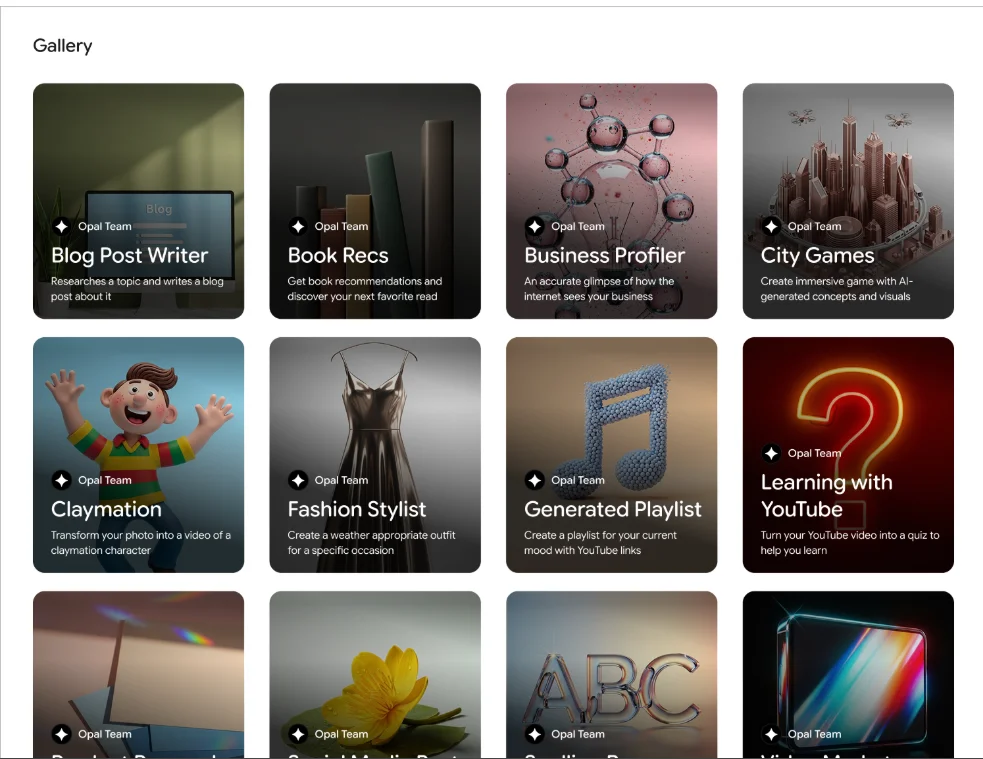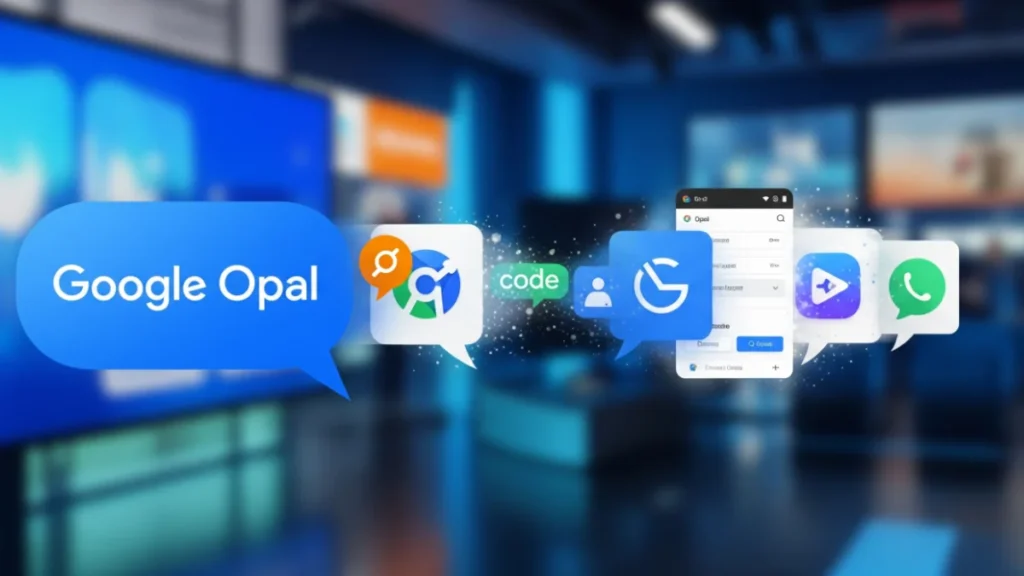Google’s new Opal tool lets you spin up custom AI-powered mini‑apps—no coding required—using plain-English prompts and drag‑and‑drop workflows.
Key Takeaways:
- No code needed: Build and share AI mini‑apps with natural language commands.
- Visual workflow: Intuitive editor shows each prompt step for easy tweaking.
- Public beta: Available now in the U.S. via Google Labs.
- Democratizing AI: Opens app creation to non‑developers and accelerates prototyping.
Google just kicked off the public beta of Opal, its experimental no‑code AI app builder aimed at making app prototyping as simple as describing what you want in plain English. The tool lives in Google Labs and is available today in the United States only, reflecting Google’s commitment to community‑driven development from day one.
Upon launching Opal, users see a gallery of starter templates—mini‑apps they can remix or use as is. Pick an example, tweak its name or function using a text prompt, and Opal instantly generates a visual workflow outlining each step: inputs, AI model calls, and outputs. Click on any block to inspect or edit the underlying prompt, giving you fine‑grained control without writing a single line of code.
Behind the scenes, Opal chains together Google’s advanced AI models to transform your descriptions into fully functional web apps. Whether you need a customer feedback analyzer, a creative writing assistant, or a simple data visualizer, Opal rapidly stitches together prompts and components to deliver a working prototype in minutes. Once your mini‑app is ready, share a link and invite colleagues or friends to test it under their own Google accounts.

This launch highlights Google’s broader strategy to lower barriers between ideas and execution. By packaging AI model calls, prompt engineering, and visual editing into one seamless interface, Opal serves both technical and non‑technical audiences. Hobbyists, project managers, and citizen developers can now experiment with AI‑driven workflows without wrestling with SDKs or complex toolchains.
Psychologically, Opal taps into our natural curiosity and desire for quick wins. The instant feedback loop—type a description, see your mini‑app come to life, and iterate visually—keeps motivation high and leverages the thrill of creation. It mirrors the satisfaction of building with LEGO® bricks: intuitive, exploratory, and endlessly remixable.
Looking ahead, Google plans to expand Opal’s availability beyond the U.S. and enrich its feature set with collaboration tools, more AI models, and deeper integrations with Google Cloud services. For now, the public beta is your invitation to experiment, prototype new workflows, and share your creations—no coding boot camp required.
